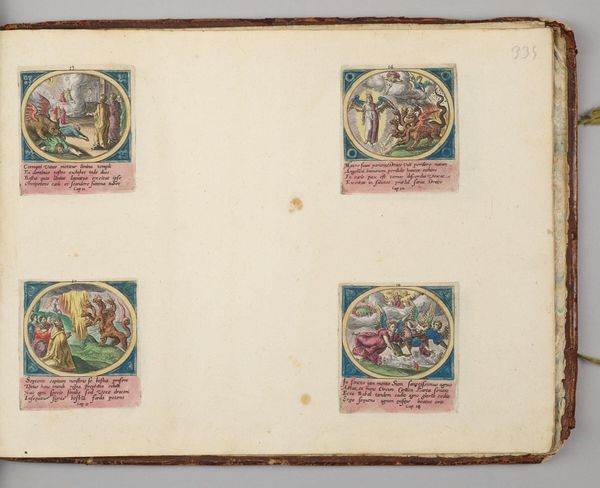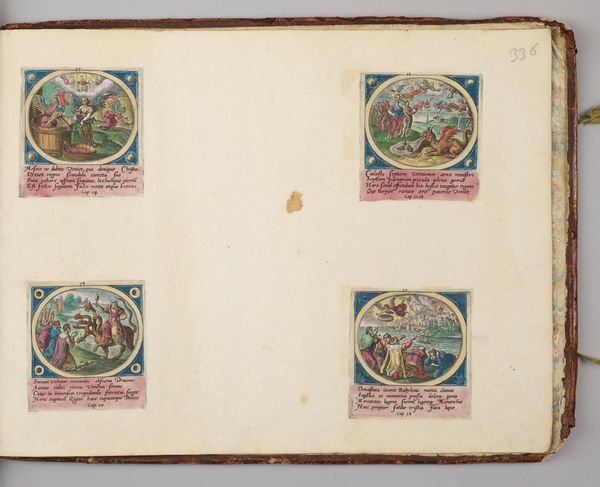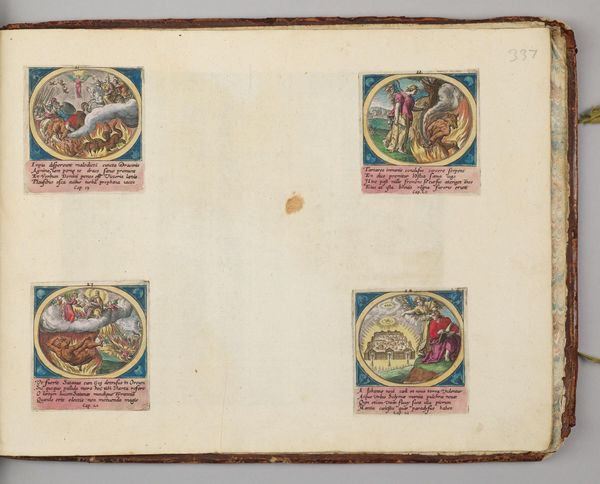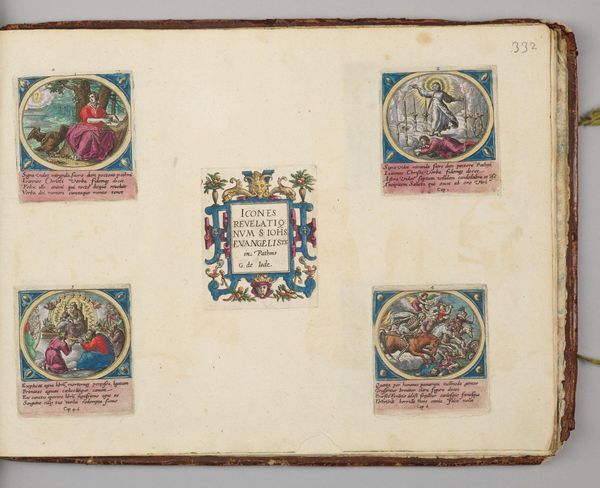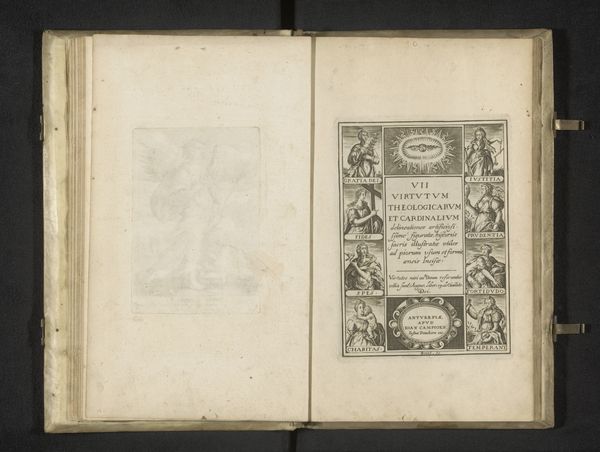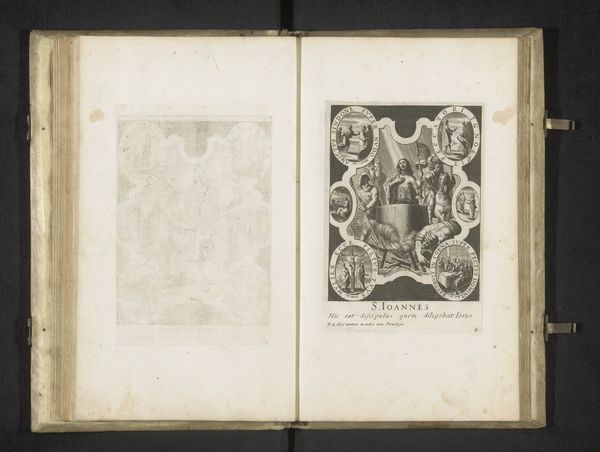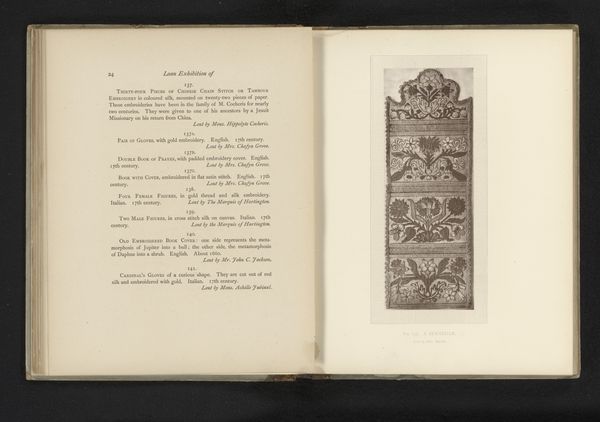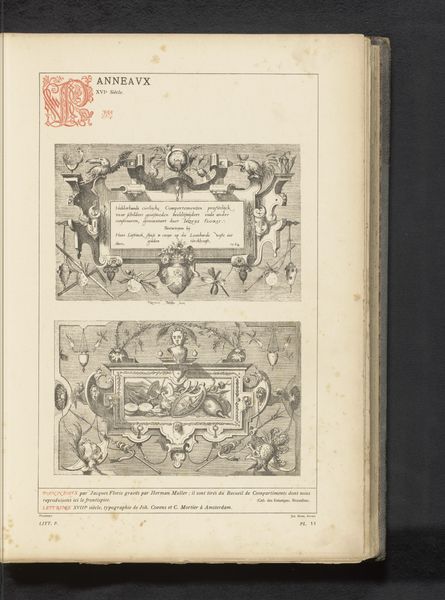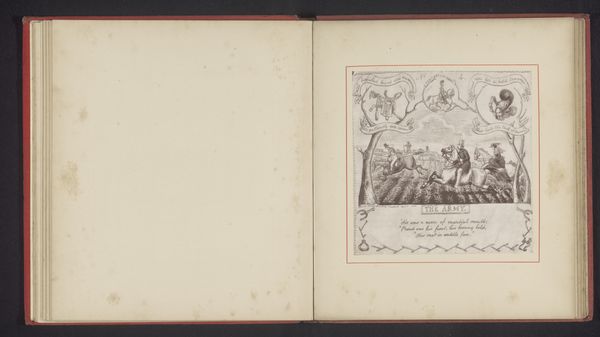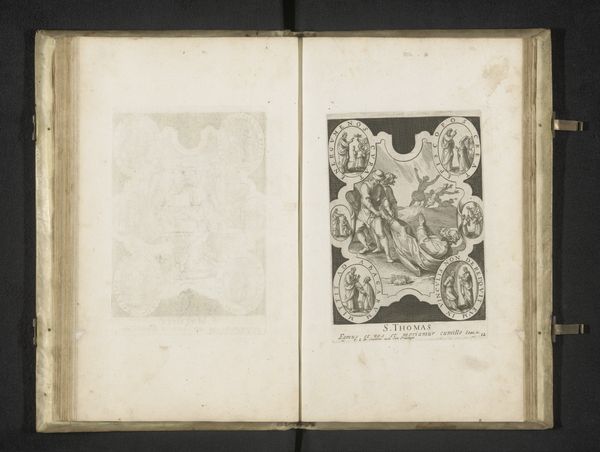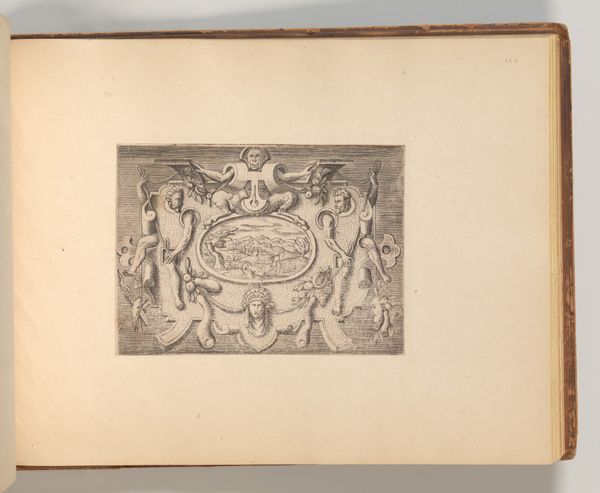
The Fourth Trumpet Call: An Angel Crying Woe; The Ffith Trumpet Call: The Plague of Locusts; The Sixth Trumpet Call: Angels Kill a Third of Mankind; The Angel with the Opened Book before 1585
0:00
0:00
Dimensions: sheet: 27 x 36.4 cm (10 5/8 x 14 5/16 in.) upper left: 8.4 x 7.6 cm (3 5/16 x 3 in.) upper right: 8.3 x 7.5 cm (3 1/4 x 2 15/16 in.) lower left: 8.3 x 7.4 cm (3 1/4 x 2 15/16 in.) lower right: 8 x 7.5 cm (3 1/8 x 2 15/16 in.)
Copyright: CC0 1.0
Editor: Here we have Adriaen Collaert’s "The Fourth Trumpet Call," and others, a series of engravings. The imagery feels very intense and symbolic. What sort of narratives do you see unfolding within these images? Curator: Each scene is a symbolic vision, drawn from the Book of Revelation. Look at the angel, for instance. Notice how the artist uses wings and trumpets. How do those symbols speak to you about divine communication and judgment? Editor: They feel very powerful, almost overwhelming. The locusts especially, are disturbing! Curator: Indeed! The locusts symbolize a plague, a scourge upon humanity. Notice the contrast between the celestial figures and the suffering mortals. What does this tell us about the artist's view of earthly existence? Editor: It feels quite pessimistic, a focus on divine wrath. I never considered how much cultural weight a single image could carry. Curator: Visual symbols often become encoded with layers of meaning. Think of the cross, the star, or even a simple dove. They echo across generations, shaping our understanding of the world.
Comments
No comments
Be the first to comment and join the conversation on the ultimate creative platform.

